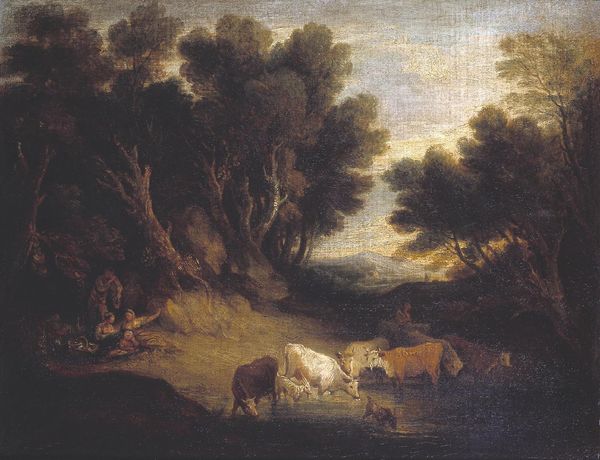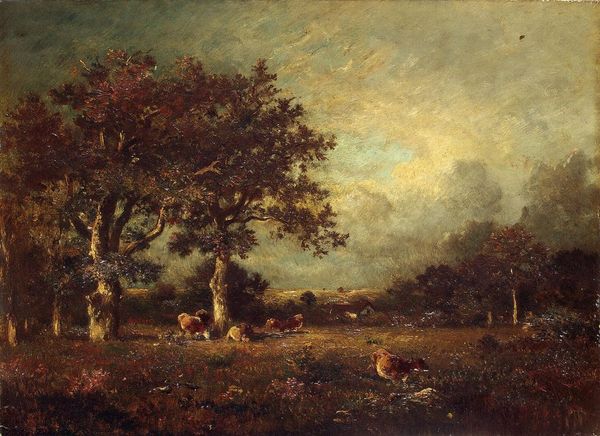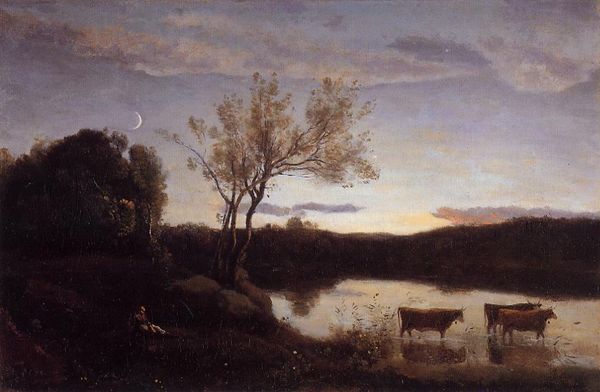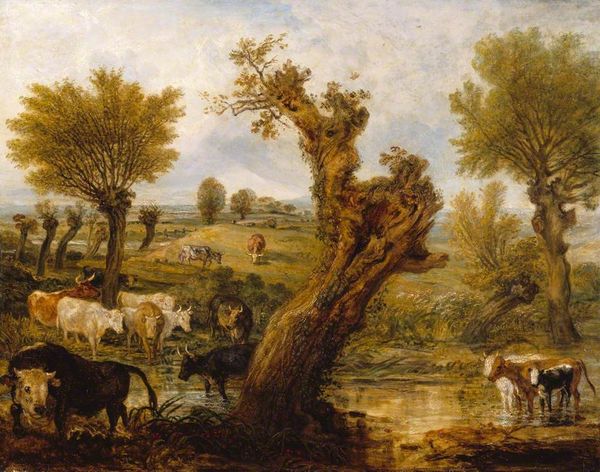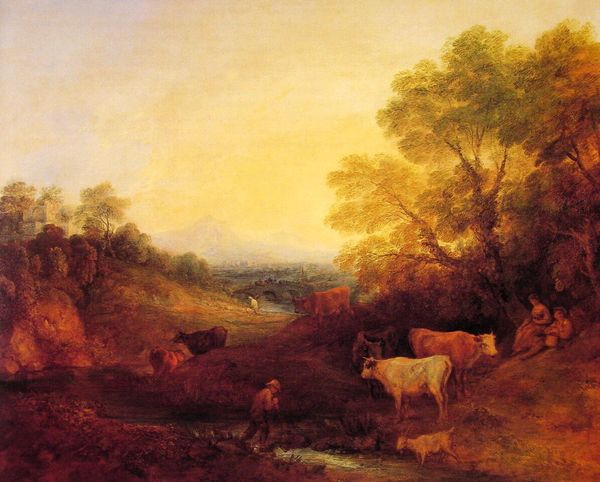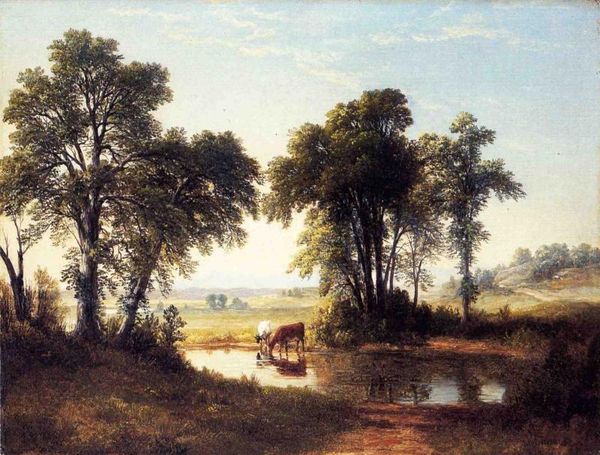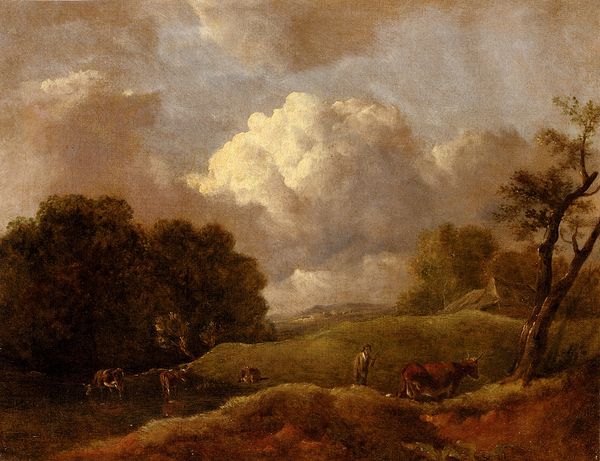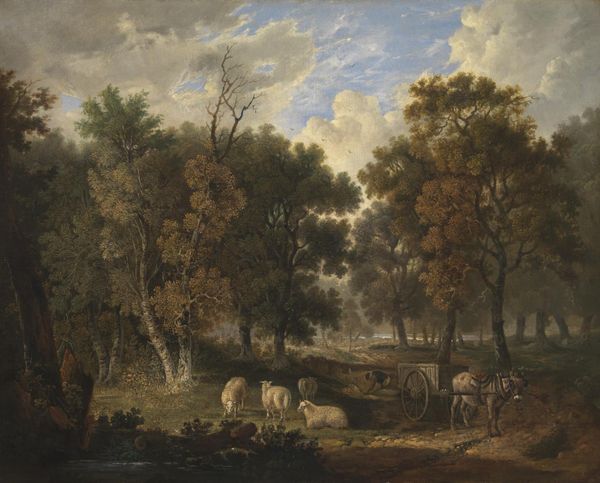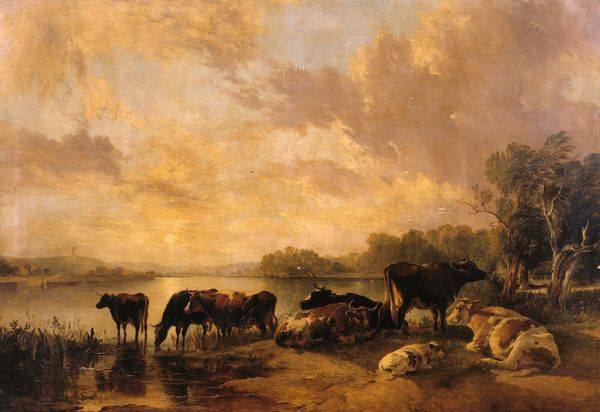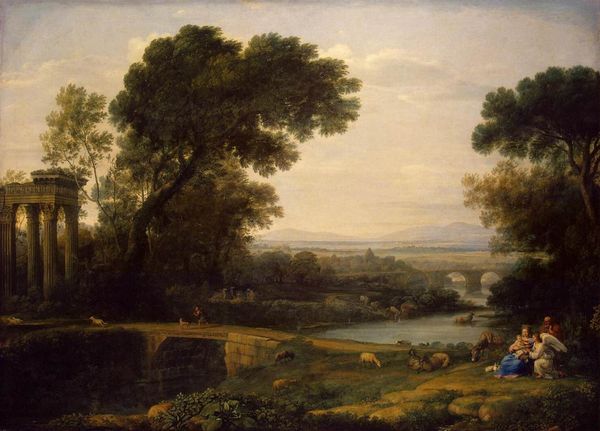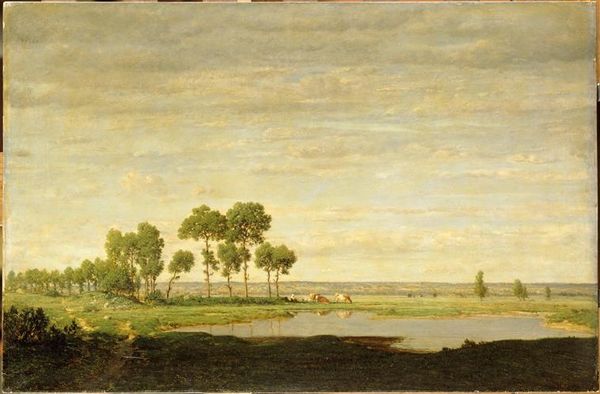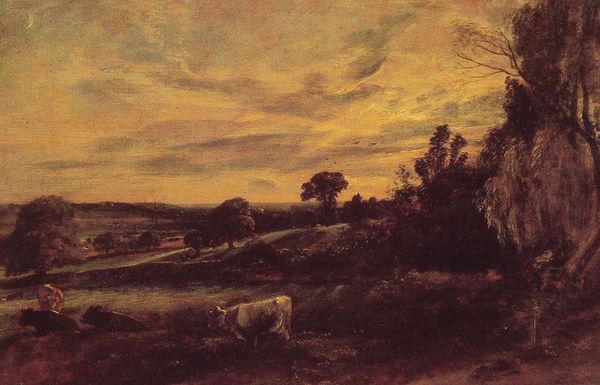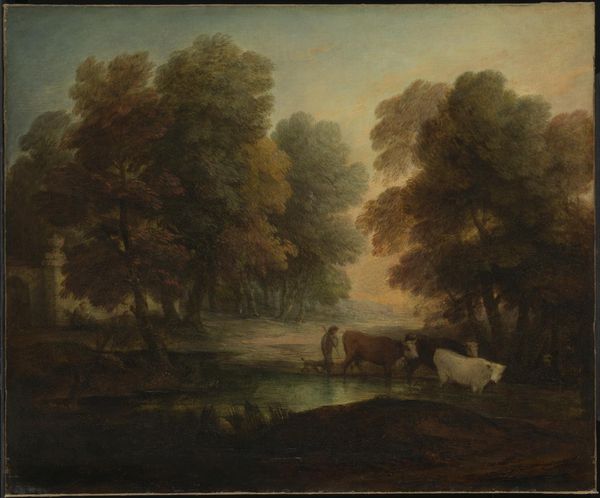
Copyright: Public domain
Editor: Right now we’re looking at Károly Lotz’s “Twilight,” an oil painting from 1870. It feels instantly peaceful, doesn't it? The soft light, the sheep grazing… it’s very idyllic. How do you interpret this work? Curator: Idyllic is the word! Lotz captured a moment suspended between day and night, full of quiet reflection. For me, there's a sense of nostalgia woven in – almost as if the artist is recalling simpler times. The golden light feels like memory itself. Do you feel that too? Editor: I do see that. The light definitely creates a kind of dreamy atmosphere. The sheep add to that sense of peacefulness. Curator: And the lone shepherd in the background becomes almost allegorical, like a protector guiding his flock through a transitional space. Think about it – what do you think he represents, personally to the artist? Editor: Perhaps a connection to nature? A more rural, agrarian past, now perhaps lost with modernization? Curator: Absolutely. Or maybe Lotz saw himself as that shepherd, guiding his own artistic vision through a changing world. The subtle detail throughout tells of the artist's acute observational skill but even more strongly of a longing to hold onto something deeply felt. It really captures the essence of Romanticism. Editor: That’s such an interesting perspective, and I can see the Romantic influence so much clearer now. It's made me appreciate it in a completely different way. Curator: That’s wonderful. Seeing art is about so much more than looking, isn’t it?
Comments
No comments
Be the first to comment and join the conversation on the ultimate creative platform.
